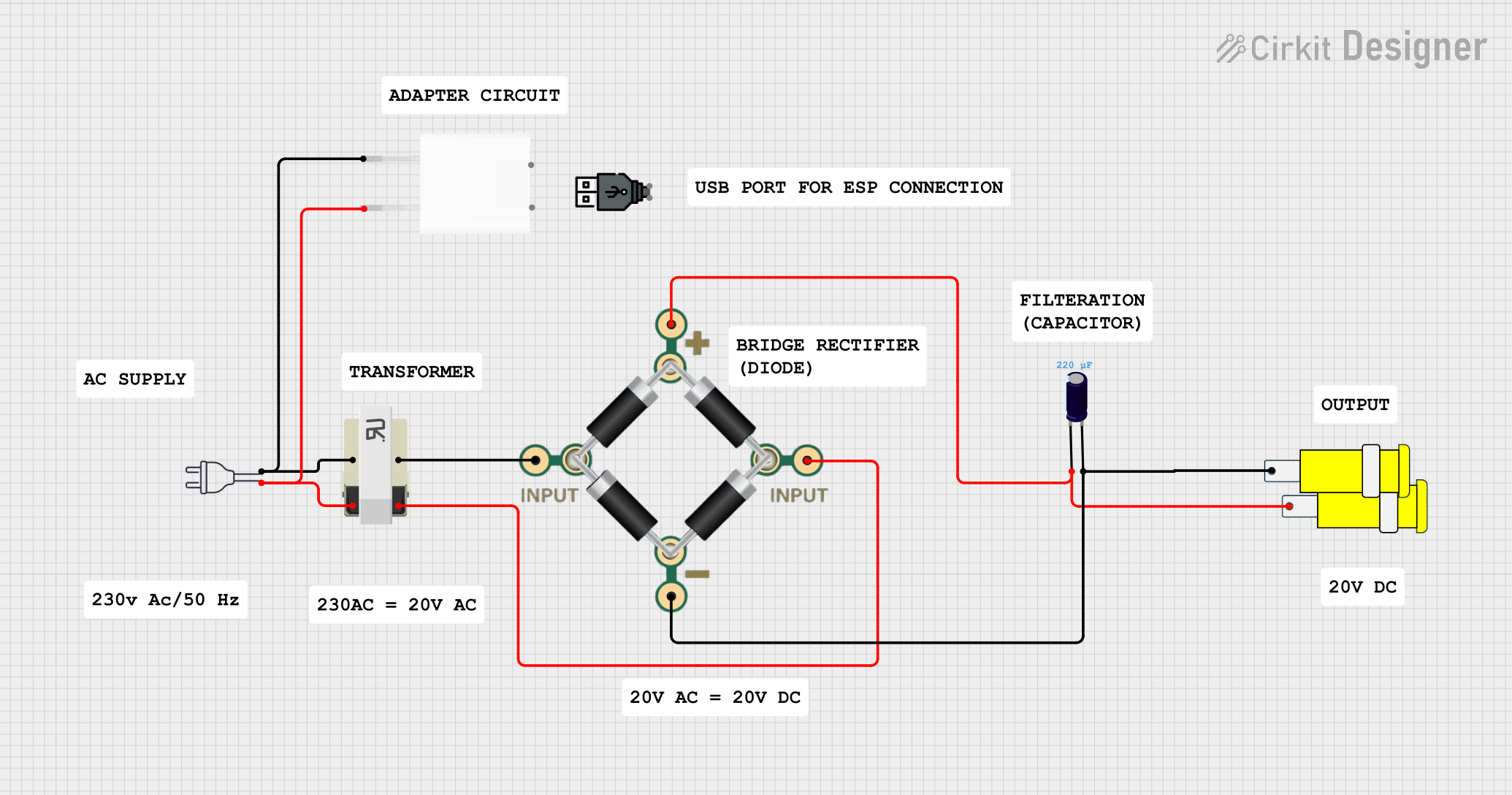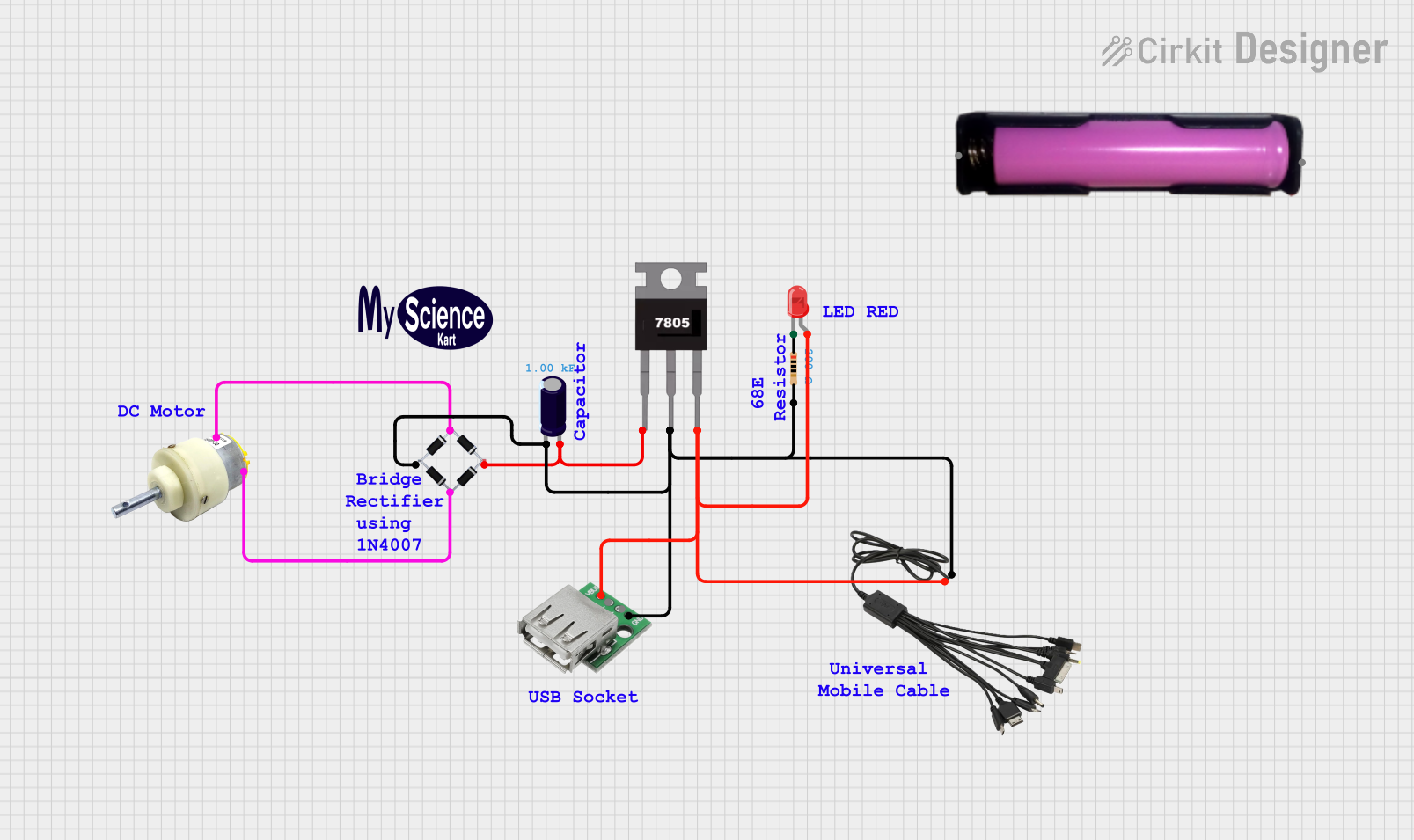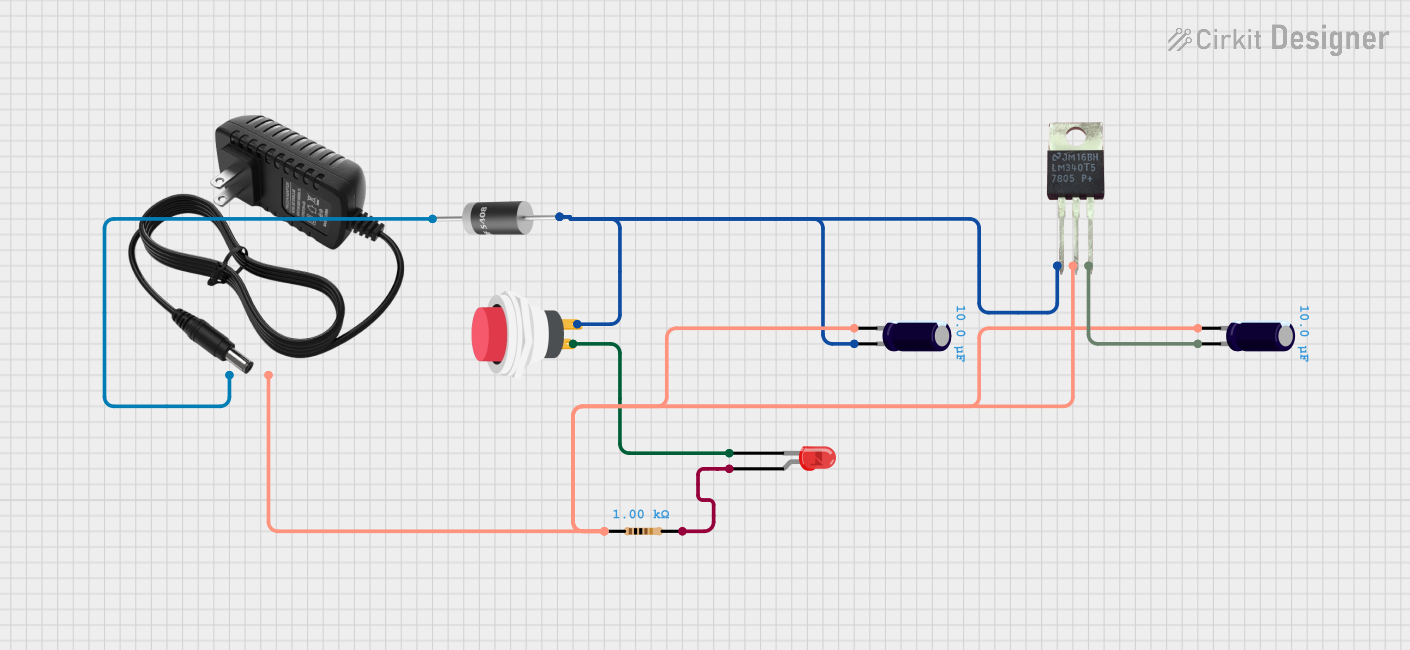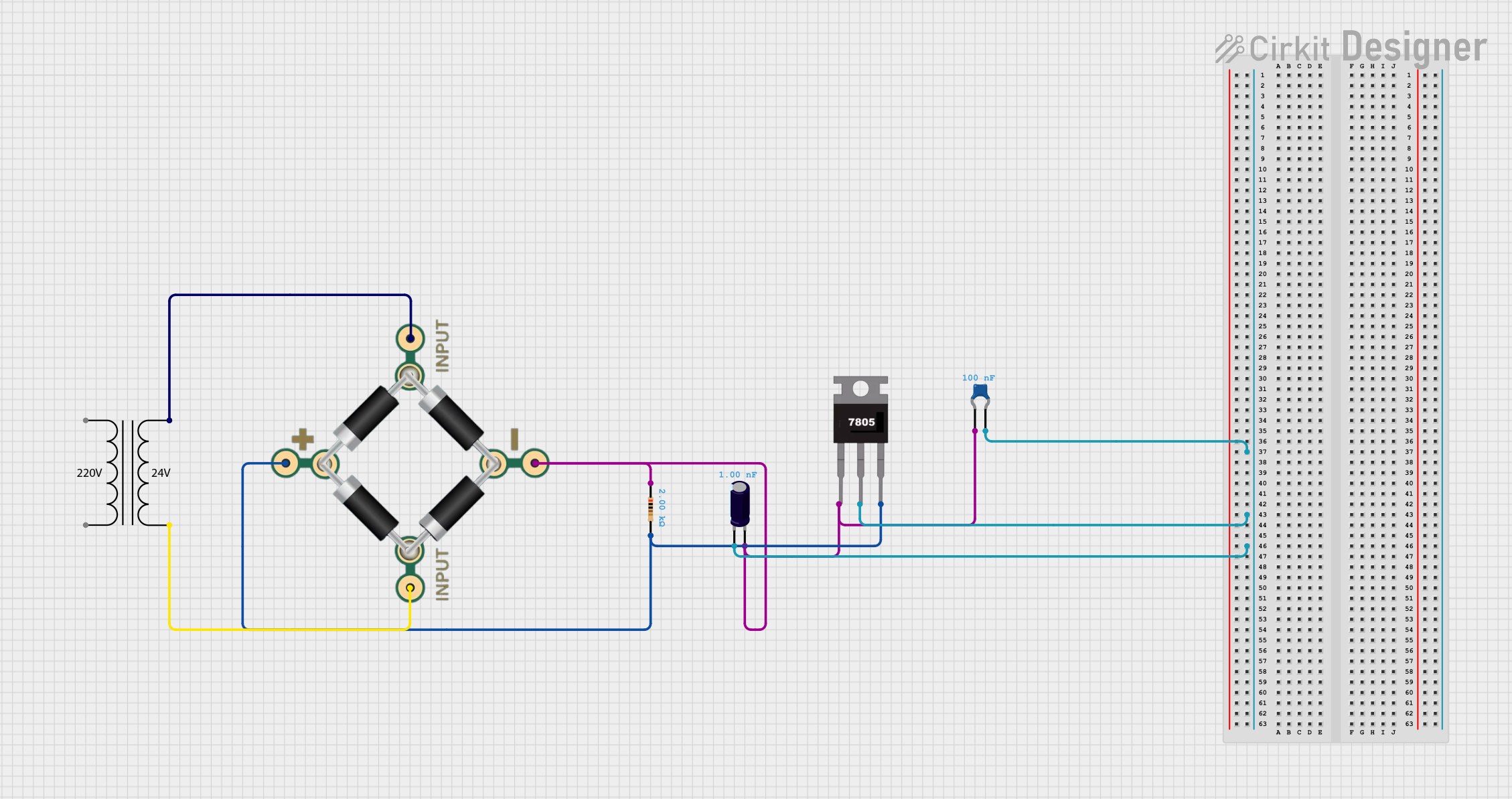
How to Use 5V Adapter: Examples, Pinouts, and Specs

 Design with 5V Adapter in Cirkit Designer
Design with 5V Adapter in Cirkit DesignerIntroduction
A 5V adapter is an essential power supply device that converts alternating current (AC) from a wall outlet into a stable 5-volt direct current (DC) used to power a wide range of electronic devices. These adapters are commonly used to provide power to small electronic projects, USB hubs, smartphones, tablets, and other USB-powered gadgets.
Explore Projects Built with 5V Adapter

 Open Project in Cirkit Designer
Open Project in Cirkit Designer
 Open Project in Cirkit Designer
Open Project in Cirkit Designer
 Open Project in Cirkit Designer
Open Project in Cirkit Designer
 Open Project in Cirkit Designer
Open Project in Cirkit DesignerExplore Projects Built with 5V Adapter

 Open Project in Cirkit Designer
Open Project in Cirkit Designer
 Open Project in Cirkit Designer
Open Project in Cirkit Designer
 Open Project in Cirkit Designer
Open Project in Cirkit Designer
 Open Project in Cirkit Designer
Open Project in Cirkit DesignerTechnical Specifications
Key Technical Details
- Input Voltage: Typically 100-240V AC (Check adapter label for exact range)
- Output Voltage: 5V DC
- Output Current: Varies by model (e.g., 1A, 2A, 2.5A, etc.)
- Power Ratings: Output power is the product of output voltage and current (e.g., 5V * 2A = 10W)
- Connector Type: USB Type-A, Micro-USB, USB Type-C, or barrel plug (size varies)
- Polarity (for barrel plugs): Usually center-positive (indicated by a symbol on the adapter)
Pin Configuration and Descriptions
| Pin Number | Description | Note |
|---|---|---|
| 1 | VOUT (+5V DC) | Positive voltage output |
| 2 | GND (Ground) | Ground reference for the output voltage |
Note: The pin configuration may vary depending on the connector type.
Usage Instructions
How to Use the Component in a Circuit
- Check Compatibility: Ensure the adapter's output current rating is sufficient for your device.
- Connect the Adapter: Plug the adapter into the wall outlet and connect the output plug to your device.
- Power On: Switch on the adapter if it has a power button. Some adapters are live as soon as they are plugged in.
Important Considerations and Best Practices
- Voltage Matching: Always use a 5V adapter for devices that require 5V. Using a higher voltage adapter can damage the device.
- Current Capacity: The adapter should provide equal or greater current than the device's requirement.
- Polarity: For barrel connectors, ensure the polarity matches your device's requirement. Incorrect polarity can cause damage.
- Overloading: Avoid overloading the adapter by connecting devices that draw more current than the adapter's rating.
- Heat: Adapters can get warm during use. Ensure they are well-ventilated and not covered by fabric or other materials.
Troubleshooting and FAQs
Common Issues
- Adapter Not Working: Check if the wall outlet has power and ensure the adapter is properly plugged in.
- Device Not Charging: Verify that the adapter's output current is sufficient and the connector is properly seated.
- Overheating: If the adapter is too hot, disconnect it immediately. It may be overloaded or faulty.
Solutions and Tips for Troubleshooting
- Check Connections: Loose connections can cause intermittent power. Ensure all connections are secure.
- Inspect for Damage: Look for any signs of damage on the adapter or cable. Replace if necessary.
- Test with Another Device: To isolate the issue, try using the adapter with another compatible device.
FAQs
Q: Can I use a 5V adapter with a higher current rating than my device requires? A: Yes, the device will only draw the current it needs. An adapter with a higher current rating is generally safe to use.
Q: What does center-positive polarity mean? A: Center-positive means that the center pin of the barrel plug is the positive voltage and the outer sleeve is ground.
Q: How do I know if my adapter is overloaded? A: If the adapter is excessively hot, making noise, or the device is not functioning correctly, it may be overloaded.
Example Connection to an Arduino UNO
// No specific code is required for connecting a 5V adapter to an Arduino UNO.
// The adapter can be connected to the Arduino's power jack or the VIN pin.
// Ensure that the adapter's output matches the Arduino's input voltage requirements
// and that the polarity is correct if using a barrel plug.
// When powering an Arduino UNO with a 5V adapter:
// - Connect the positive terminal of the adapter to the VIN pin.
// - Connect the ground terminal of the adapter to one of the GND pins.
// Always double-check connections before powering up the Arduino to prevent damage.
Note: The Arduino UNO can be powered via the VIN pin with a range of 7-12V. If you are using a regulated 5V adapter, it is recommended to connect it to the 5V pin instead, bypassing the onboard voltage regulator.
Remember to always consult the specific datasheet or user manual for your 5V adapter model for the most accurate and detailed information.